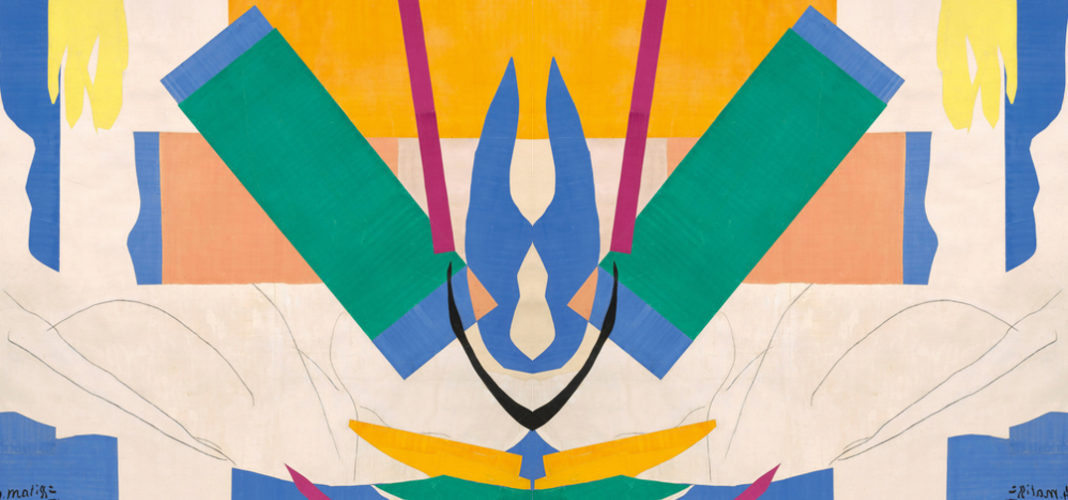The last ten years of Henri Matisse’s were far from what most of us would think of as joyful. His marriage was over, he was diagnosed with cancer and underwent a number of painful surgeries, and his beloved daughter was imprisoned and tortured by the Gestapo for aiding the French Resistance. Who could have blamed him for calling it quits and sinking into deep despair? And yet, during this dark time he created the most electrifyingly joyful work of his career.
Confined to a wheelchair and crippled by pain, Matisse never stopped working. In fact, rather than a period of decline, it became what Matisse described as a “seconde vie.” He transformed the darkness into an intensely vibrant and productive period, creating “cut-outs” –the cut paper collages he described as “painting with scissors.” Unlike actual painting, painting with scissors could be done from his wheelchair or bed.
Matisse once famously said, “Work cures everything,” and one cannot help but consider the therapeutic value of the cut-outs for Matisse. Studies show that meaningful work and a sense of purpose—a reason to get out of bed in the morning—are linked with longevity and life satisfaction. Because of pain and physical limitations, Matisse often couldn’t get out of bed in the morning so he rose to the challenge and worked from his bedside instead:
You see as I am obliged to remain often in bed because of the state of my health, I have made a little garden all around me where I can walk… There are leaves, fruits, a bird.
The “little garden” he refers to are the cut-outs pinned to the walls surrounding his bed. They served as ideal stand-ins for the natural world, providing solace and beauty in a make shift studio.
Matisse made it work. He cultivated and created an environment that enabled him to pursue his passion and immerse himself in this labor-intensive work. Rather than serving as a metaphor for decline or loss, these works pulsate with life and vitality:
This new lease of life led to an extraordinary burst of expression, the culmination of half a century of work, but also to a radical renewal that made it possible for him to create what he had always struggled for: ‘I have needed all that time to reach the stage where I can say what I want to say.’
Matisse embodies what people refer to today as resilience. With passion and perseverance, he navigated his way through this challenging period and found beauty in the darkness. He once said,
There are always flowers for those who want to see them.
Even in the autumn of his life Matisse chose to see the flowers.






